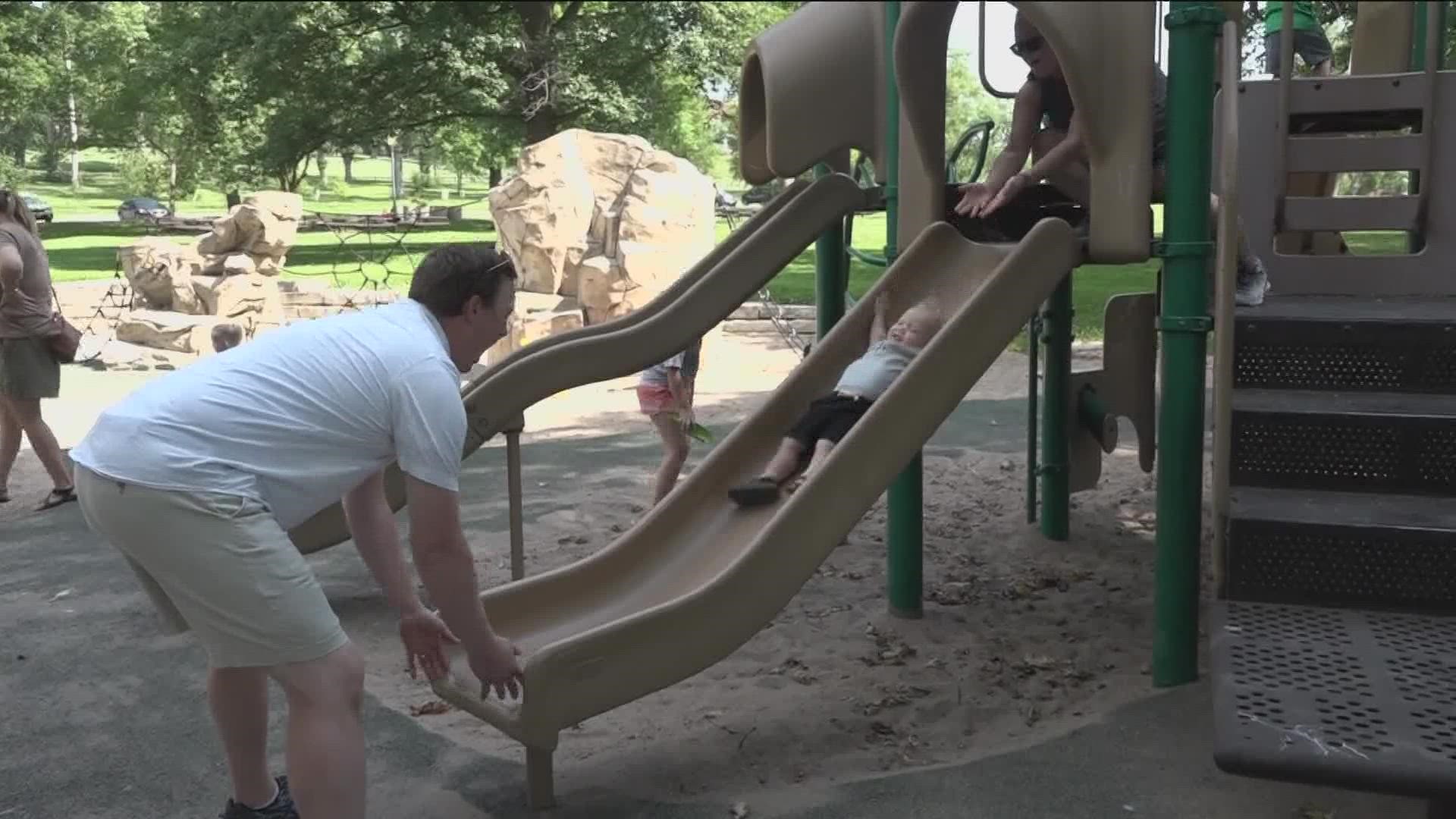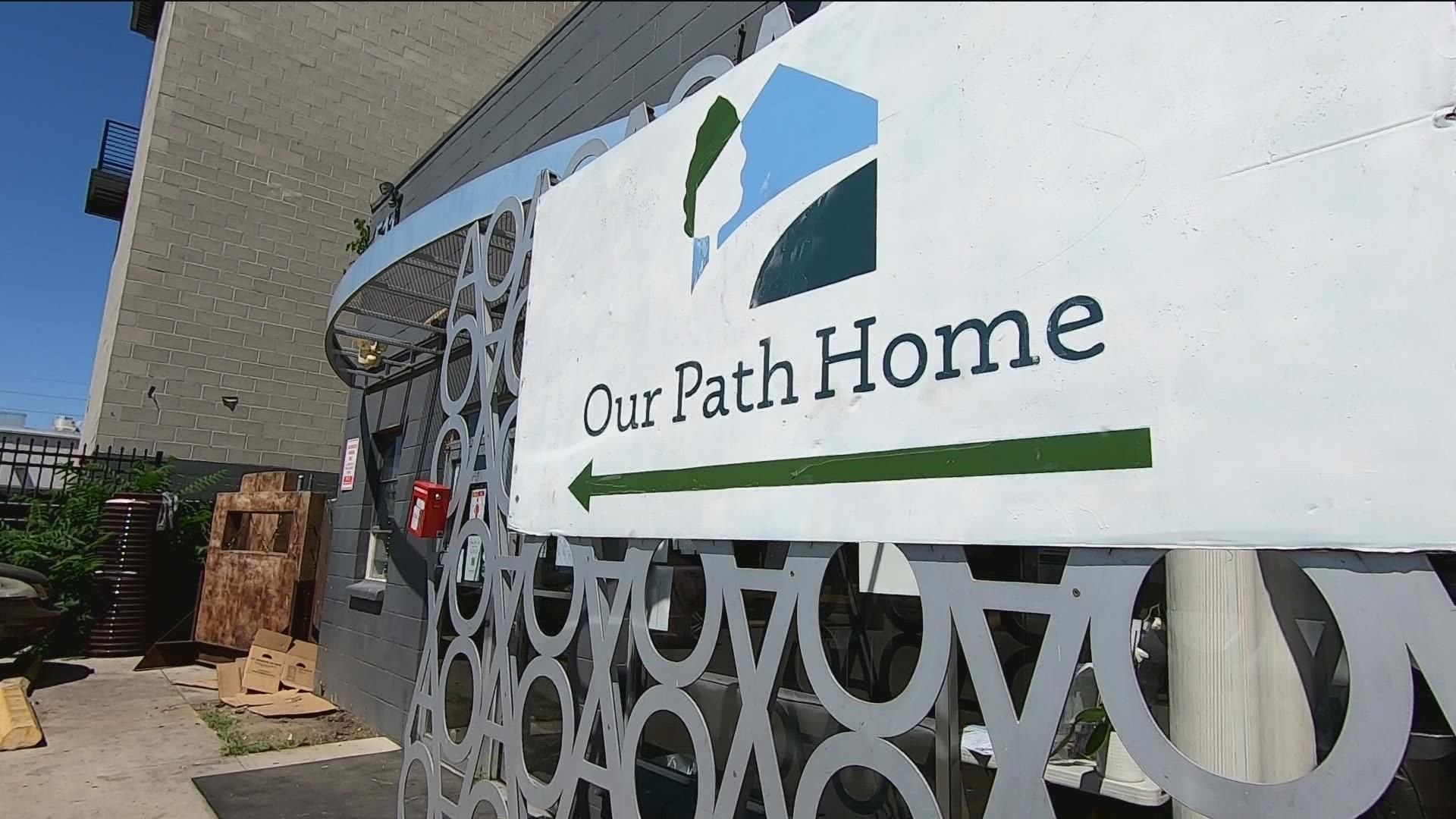BOISE, Idaho — Extreme heat is back in southwest Idaho, with high temperatures of 100 degrees or more forecast for the next five days in Boise. Finding ways to stay cool isn't just a matter of convenience; it can help keep you out of the emergency room.
Staying hydrated and having a cool, dry place to escape the summer heat go a long way to preventing heat-related illness. For those experiencing homelessness, several locations in and near downtown Boise are acting as cooling spaces during the day.
Heat-related illness can range from heat rash and sunburn, which can typically be treated at home, to heat cramps and heat exhaustion, which may in some cases require medical attention, to heat stroke, a medical emergency. The Centers for Disease Control and Prevention has warning signs and advice about what to do in response.
Heat rash: This is an irritation of the skin caused by excessive sweating. The rash may present as a red cluster of pimples or small blisters, usually on the neck and upper chest, groin area, under the breasts and in the elbow creases of the antecubital region (palm side of the arm).
To treat heat rash, stay in a cool, dry place; keep the rash dry; use powder -- like baby powder -- to soothe the rash.
Sunburn presents as painful, red, warm and sometimes blistered skin. If possible, stay out of the sun until your sunburn heals; put cool cloths on sunburned areas or take a cool bath; put moisturizing lotion on sunburned areas; do not break blisters.
Heat cramps: These are painful cramps in the body's muscles due to low salt levels, typically caused by excessive sweating. Symptoms include muscle pain or muscle spasms, usually in the abdomen, arms or legs.
People experiencing heat cramps should stop physical activity and move to a cool place; drink water or a sports drink; wait for cramps to go away before doing any more physical activity. If heat cramps last longer than one hour, if you're on a low-sodium diet, or if you have heart problems, get medical help right away.
Heat exhaustion is also one of the body's responses to the loss of water and salt. Excessive sweating is a symptom of exhaustion, along with weakness or fatigue, dizziness and/or confusion, clammy skin, muscle cramps, and a flushed complexion.
If you experience heat exhaustion, move to a cool place, loosen your clothes, put cool, wet cloths on your body or take a cool bath, and sip water. If you are throwing up or symptoms last longer than one hour, get medical help right away.
Heat stroke: The most serious heat-related illness, heat stroke, occurs when a person no longer sweats and body temperature reaches dangerous levels. Symptoms include dry, hot reddish skin and a lack of sweating; body temperature of 103 degrees Fahrenheit or higher; a rapid, strong pulse; chills; confusion; and slurred speech.
Heat stroke is a medical emergency -- call 911 right away. Also, move the person experiencing heat stroke to a cooler place. Help lower body temperature with cool cloths or a cool bath. Do not give the person anything to drink.
Preventing heat-related illness
Do not leave children or pets in cars! On a 100-degree day, temperatures inside a car can reach 120 degrees within 10 minutes and 135 degrees within 30 minutes.
Pet owners: Provide plenty of fresh water for your pets, and leave the water in a shady area.
Choose lightweight, light-colored loose-fitting clothing. Light colors reflect heat; clothes that are loose-fitting are less likely to provoke heat rash.
Schedule outdoor activities carefully: Morning and later evening hours are coolest. Rest often in shady areas so your body has a chance to recover.
Pace yourself: If you're not accustomed to working or exercising in a hot environment, start slowly and pick up the pace gradually. If exertion makes your heart pound and leaves you gasping for breath, light-headed, confused or faint, stop all activity, get into a cool or shady area, and rest.
Wear sunscreen: Sunburn affects your ability to cool down and can make you dehydrated. Look for "broad spectrum," "UVA/UVB protection," and an SPF of 15 or higher on the label. Apply sunscreen 30 minutes before going out.
Drink plenty of fluids, regardless of how active you are, and don't wait until you feel thirsty to drink. If your doctor limits the amount you drink or has you on water pills, ask how much you should drink while the weather is hot. Avoid very sugary or alcoholic drinks, as they can actually cause you to lose more body fluid.
Stay cool indoors. Even a few hours spent in an air-conditioned environment can help your body stay cooler when you go back into the heat. Here is a guide to cooling shelters open this summer in Boise.
Watch more weather:
See the latest weather forecasts and news in our YouTube playlist:


